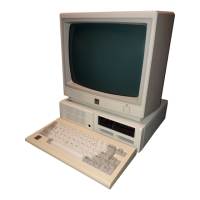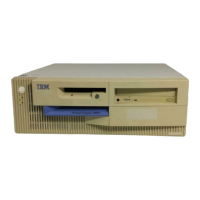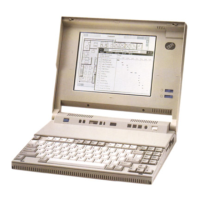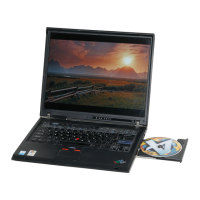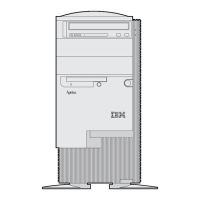Here’s what you can change on the screen:
Shadow BIOS in RAM
The Basic Input/Output System
(BIOS)
is the machine language that runs
the computer. The BIOS for the computer is stored in
read-only memory
called
ROM
. The Shadow BIOS in RAM option (not available on 486SX,
486DX, and 486DX2 72-pin memory SIMM system boards) lets you increase
the computer’s performance by copying BIOS into
random-access memory
(RAM). Since the computer accesses RAM faster than it accesses ROM,
the programs run faster.
Hard Disk Drive (C: or D:)
This option (available on 486SX, 486DX, and 486DX2 72-pin memory SIMM
system boards) shows you an entry for each hard disk drive in the system
unit. If you add or change a hard disk drive, you must select the correct
drive position for this option on the Configuration Utility screen.
Diskette Drive (A: or B:)
This option shows you an entry for each diskette drive on the computer. If
you add or change a diskette drive, you must select the correct diskette
drive type on the Configuration Utility screen.
Display Type
This option (available on 486SX, 486DX, and 486DX2 72-pin memory SIMM
system boards) shows the display type installed. If you add or change a
display, you must select the correct display type on the Configuration Utility
screen.
Note: If you are not sure which display is installed, run the Setup program,
and check the display type. Make sure the display type shown on the Con-
figuration Utility screen matches the display installed.
Power-On Password
You may want to restrict the use of the computer by setting a
power-on
password
. This password must then be entered each time you turn on the
computer
before
you can begin using the computer.
A password can be up to seven characters long (letters, numbers, or a com-
bination of the two). Once you create the password,
be sure to write it
down and put it in a secure place
.
Startup Sequence
When the computer starts, it looks for the operating system files either on
diskette or hard disk. If there is a diskette in the diskette drive that does not
contain the operating system files, most computers send an error message
1-16

